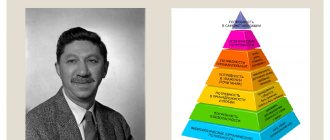Has this ever happened to you: you get up in the morning and everything around you is annoying? The dog left a juicy fleshy bone in his favorite shoe, the neighbors are drilling your brains right above the bedroom, your phone, which was set to charge overnight, for some reason desperately beeps from hunger, and your significant other again asks the same question that you answered in detail yesterday. What makes you angry are conflictogens - these are factors that provoke the manifestation of discontent, irritation or aggression. Moreover, such a trigger can be either someone’s activity or inaction, as well as inanimate and intangible objects (this is when you don’t go to bed for a long time because “someone is wrong on the Internet”).
Kinds
There are different types of conflictogens. These may be manifestations of selfishness, aggression, the desire for superiority, violations of existing rules and some unfavorable combination of circumstances. They live mainly in places where there are large crowds of people (as a rule, those with different upbringings or not at all), at work/study, and wait for you at home, but this is an integral attribute of the social sphere, because we are so different from each other that inevitably provokes clashes.
Conflictogens: constructive interaction
Conflicts interfere with normal interaction, productive work, and solving assigned tasks. Few people manage to avoid tense situations completely.
To reduce the frequency of conflicts and minimize their destructive consequences, you need to have a clear understanding of yourself, your own strengths and weaknesses, and learn to understand and direct emotions in a peaceful direction. Stable self-esteem, coupled with normal physical well-being, makes it possible to react more calmly to any difficulties and not get involved in conflict situations.
Irina Sherbul
Display of aggression
Aggression gives rise to many conflicts. It happens that a person got up on the wrong foot, the cat scratched him at home, and now wants to discharge himself (and he just didn’t like the expression on your face), or he is simply offended by life. Often a person of this type will specifically look for an object for discharge. And the victim can be seen from afar - these are not very confident people who are accustomed to agreeing with what they are told.
In the absence of a suitable object, the aggressor sometimes chooses any one. It doesn't matter what he finds fault with. No matter what you do, everything is bad. Did you make scrambled eggs for breakfast? “It’s terrible, there’s so much cholesterol in there, you want my death!” Have you cooked porridge? Disgusting, “you know I eat scrambled eggs in the morning!”
There are several options for behavior here. If you also don’t mind unloading, then you can just quarrel to your heart’s content and even break dishes (if it makes both of you feel better after that). But the choice of response will be more effective the better you know your opponent. If after the phrase “Yes, dad, I did something terrible again, I repent,” he calms down, you will have to choose this option. Sometimes it is enough to remain silent, not paying attention to the provoking statement.
But not everyone will be reassured by the passive acceptance of guilt - a conflicted person is not looking for justice, he wants to let off steam, or he simply asserts himself at the expense of his neighbor. Some deliberately seek to aggravate the situation, try to make people cry, and spoil the mood. If the situation becomes tense on public transport, it is better to leave the cabin if possible. And when you have a conflict with a member of your household or with your boss, it will be difficult to “leave the cabin” (like during a flight).
Rudeness, categoricalness and communication in a negative way are communicative conflict generators (and some people simply have this style of conveying information). These also include various claims and statements addressed to a person in front of strangers. So it is advisable to “filter the market”, because even an unsuccessful joke in the spirit of “Be quiet, woman!” can lead to a whole host of problems.
Words are conflictogens in sales. Requirements for employee speech
Literary speech
This means that the speech should not contain errors (in meaning, stress, pronunciation), colloquial words, or colloquial expressions. Even if you have a store for a young audience, even if your clients do not use the most literary speech - keep your mark, speak as correctly as possible.
Gentleness and courtesy
All wording should be very respectful so that the client feels sincere attention. Even refusals, the need for some restrictions for the client, must be formulated very delicately
Persuasiveness of formulations
Eliminate from the speech words that neutralize the meaning of what was said: in principle, a high-quality, fairly popular, good option. These words show the employee's uncertainty and make the client doubtful.
Involvement, interest
Listen carefully to the client, using active listening technology, and be in dialogue. This allows you to establish contact with the client and create a feeling of mutual understanding.
Eliminate conflicting phrases
Conflict triggers are phrases that may reflect the true state of affairs, but be offensive to the interlocutor. The most striking example from our everyday life is “I told you so!” As a rule, the other party really warned us about something, but we did it differently and ended up with a problem. And the phrase “I told you so” is the final blow to our already bad mood.
When communicating with clients, these are phrases that confuse the client, create a feeling of abandonment/hopelessness, shift the blame onto the client, hint at the stupidity of the client, and show the superiority of the employee. Let's look at examples of conflicting phrases and possible replacement options:
How to calm down and calm your opponent?
Try to avoid escalation of conflicts, because the “offended” person has a great temptation to respond, so to speak, symmetrically. You give me your word, I give you two. It is better to communicate calmly, try to meet people halfway, sometimes remain silent, and, as a last resort, simply leave. And it is advisable to do it quickly if the aggression is not verbal, but physical. You don’t want to show up to work in a bloody jacket just because you couldn’t stand the attacks of a drunk guy who didn’t like your facial features?
Behavioral reactions are unpredictable. Remember this when you yourself want to take your anger out on someone. If you are a victim, know that sometimes breaking a pattern is a very effective remedy. Instead of snapping, say: “Ivan Petrovich, you look more attractive when you’re not angry!”
By the way, aggressiveness can be both innate (who would you like to hook today?) and sudden (situational): “I’m a patient person, but only an idiot would eat such over-salted cooking!!”
Do not forget that words are not a sparrow (and many are ready to remember an insult for many years and even their entire lives), and if you yourself are often the aggressor, here are several options to avoid aggravating the situation:
- rationally comprehend the situation, assess the situation, find the causes of difficulties;
- sublimation (relieving internal tension by redirecting energy to achieve socially acceptable goals): try to relieve tension through physical exercise (choose an animate object only if it is a sparring partner in boxing) - do push-ups, run, pump up your abs;
- try to speak out and voice your accumulated problems.
Conflict agents or how to behave in conflict
How do people react to sharply thrown offensive words and statements addressed to them? Most will “reciprocate”, some will remain silent and only a few will not pay any attention. This is how conflict begins.
More than half of conflicts arise beyond the wishes of their participants. The so-called conflict agents are to blame for this. Conflict triggers are words, some actions or even inaction that can lead to the emergence of a conflict situation and its escalation into a conflict. A conflict agent only “can” lead to conflict. This property of a conflictogen is dangerous; it consists in a loss of vigilance in relation to it.
What is the position of the head of the organization regarding conflictogens and conflicts in general. An organization, like any system, constantly strives to maintain a certain achieved equilibrium at a certain point in time, as well as to change and develop. In this case, non-conflict is a condition for maintaining balance, and conflict is a desire for development. Therefore, the manager has to solve two tasks that are opposite in their focus: to be aimed at developing the organization and at the same time maintaining its sustainability (stability). This is the main source of conflict for the organization. To achieve sustainability, you need stability and a minimum of risk; to develop, you need to introduce innovation, and this is associated with high risks and conflicts.
Conflict can become the basis of conflict. In addition, due to one conflictogen, several reasons may arise that will give birth to several conflicts at once. This implies the multidimensionality of the conflict, which speaks of the need to isolate it from a conflict situation, highlight all its attributes, as well as distinguish the transition stage itself, which contains cooperation, competition and conflict.
Conflict-prone behavior is expressed in the following points:
1) in showing open distrust towards a person or group;
2) unwillingness to listen and interrupting the interlocutor;
3) constantly belittling the importance of his role;
4) focusing on the differences between oneself and the interlocutor is not in his favor;
5) lack of desire to admit one’s own mistakes and someone else’s rightness;
6) constantly downplaying the employee’s contribution to a certain common cause and exalting his own contribution;
7) in imposing one’s point of view;
 in the manifestation of insincerity in judgments;
in the manifestation of insincerity in judgments;
9) in an unexpectedly sharp acceleration of the pace of the conversation and its rapid completion, as well as everything that is usually perceived extremely negatively by others.
In business communication, dangerous conflict-generating words are the following:
1) words showing distrust: “you deceived me”, “I don’t believe you”, “you don’t understand”, etc.;
2) words expressing insult: scoundrel, scumbag, fool, stupid, lazy, nonentity, etc.
3) words expressing threats: “the earth is round”, “I will not forget this”, “you will regret it”, etc.;
4) words of ridicule: bespectacled, lop-eared, mumble, dystrophic, short, stupid, etc.;
5) words showing comparison: “like a pig”, “like a parrot”, etc.;
6) words expressing a negative attitude: “I don’t want to talk to you,” “you disgust me,” etc.;
7) must words: “you are obliged”, “you must”, etc.;
 words of accusation: “everything went bad because of you,” “you’re an imbecile,” “it’s all your fault,” etc.;
words of accusation: “everything went bad because of you,” “you’re an imbecile,” “it’s all your fault,” etc.;
9) words expressing categoricalness: “always”, “never”, “everyone”, “nobody”, etc.
The interlocutor cannot calmly perceive such words spoken to him. He begins to defend himself and at the same time tries to use the entire arsenal of defensive and exculpatory means. If such a situation arises, then the culprit is the one who first used conflict-generating words. The nature of conflict-generating words is also explained by the fact that a person is more sensitive to the words of others than to his own. We are more sensitive to words addressed to us, because we consider it important to protect our dignity, but we do not treat our words and actions very carefully.
IN CONFLICTOLOGY THERE ARE THREE TYPES OF CONFLICT GENENS:
1) conflictogens expressing superiority include:
- orders, threats, remarks, mockery, ridicule, banter, etc.;
- bragging, enthusiastic stories about one’s own successes and achievements;
- imposing one’s opinion, giving advice is often perceived negatively by the interlocutor and he has a desire to do the opposite, especially if this happens in front of other people.
Advice given in the presence of other people is perceived as a reproach;
- interrupting the interlocutor’s statements, raising his voice, correcting himself during a conversation shows that a person wants only him to be listened to, his opinion should be important, and his thoughts should be more valuable. Those with such a position should think about whether their thoughts are really that important?;
— violation of ethics in behavior, ignorance of the basics of etiquette is perceived as impolite treatment, disregard for respect for the interlocutor;
- a demonstration of a condescending attitude, having a connotation of “goodwill”, irritates and contributes to the emergence of a conflict “I ask you not to be offended, but in my opinion you are wrong”;
— demonstrating confidence in one’s rightness in the form of categorical statements “one way and not another” often raises doubts and a desire to refute such a statement.
2) conflictogens, showing aggressiveness, which a person may have by nature, or may be determined by a specific situation, bad mood, etc.
Natural aggressiveness can arise as a result of self-affirmation in a certain social environment (family, team, peer group), and can also be a protest against dependence on the “main” (parent, boss, senior in position or status).
The occurrence of situational aggressiveness depends on the current situation, poor health and mood, difficulties in family, household or work relationships. Often this type of aggressiveness is a response to a conflictogen received from someone. As a result, retaliatory aggressiveness is provoked, which leads to even greater intensity of passions.
Is aggression positive or negative? To resolve this issue, two points should be noted:
— a person with high natural aggressiveness is a walking conflictogen, which is not always favorable for the climate in the team;
— it is more difficult for a person who is absolutely conflict-free and does not have “healthy anger” to achieve his goals in his personal life and at work.
3) conflictogens expressing selfishness.
An egoist achieves something for himself at the expense of others. This is what irritates others and creates a conflict situation. The escalation of the conflict inflames the conflict when we strive to respond to a conflictogen addressed to us with a stronger conflictogen. This conflictogen is the most powerful, we use it to teach the offender a lesson. The primary conflictogen is usually said unintentionally, and then there is an escalation of the conflict, which leads to conflict. This all adds up to a pattern of unintentional conflict.
To avoid the desire for superiority, restrain aggression and overcome excessive selfishness, the following mechanisms exist:
1) the desire for superiority can be overcome in the following ways:
- you should make your interlocutor feel your importance and competence in your eyes;
- it is possible to use conscious belittlement of one’s own merits;
— you need to understand that modesty is one possible way to overcome your own vanity and feelings of superiority over others.
2) the desire to curb aggression. Aggression needs an outlet. If you throw it out on others, it will come back, but will be many times stronger.
If you keep it inside yourself all the time, it can lead to mental illness. Therefore, psychological relaxation is important for maintaining health.
To relieve increased aggressiveness, you can use three methods:
- passive method - its essence is to speak out, to “cry” to someone. With the help of sympathy and empathy from the outside, relief comes to you. If you have severe pain lurking inside, then psychotherapists recommend crying, since along with tears, special enzymes associated with stress are removed from the body and have an adverse effect on the nervous system.
This method of relieving aggression and stress is more often used by women. Men are incapable of complaining, much less crying. But experts, in any case, recommend doing this periodically (at least once a year) (naturally, without the supervision of others) to preserve mental health potential;
- active method - its essence lies in physical activity (physical activity). Scientists have found that the companion of any stress is adrenaline, which burns during physical work. At the same time, any form of physical activity is effective: sports (running, fitness, gym), work associated with stress when solving everyday problems (working with a shovel, etc.);
- logical-psychological method - its essence lies in the realization that it is important to change the direction of thinking to improve your mood and well-being. If something unpleasant happens and a person wants to isolate himself from it, then he gives himself the command: “I shouldn’t think about it.” But the result turns out to be unattainable, all thoughts revolve around this situation. There is no point in fighting this. How to be? The main thing is not that you shouldn’t not think about the problem, but that you need to think about something positive and life-affirming. In this case, thoughts switch to a “different wavelength,” and this will allow you to be distracted by more important, useful things that can bring more joy and satisfaction.
3) overcoming selfishness. Selfishness is an extreme, brought to a state where a person becomes unloved by everyone, including loved ones. This is not the best character trait. Pronounced altruism, also extreme, is not the best character trait. Therefore, these extremes should be avoided. But how? We need to combine them together. The essence of this approach is that by doing good to others, a person does it first of all to himself (to himself, but through another). This way of interacting with people will allow you to overcome your own selfishness.
The personnel of any organization must be able to work with conflict generators: identify them, be aware of them and form the right attitude towards them. The role of a conflict manager is also great here, whose tasks are to recognize a hidden resource and create conditions for the manifestation of the activity of a conflict agent, as well as limiting its destructive impact on the process of implementing innovations.
Basic rules for working with conflict agents.
1. Conflict agents need to be known directly.
2. Human needs are decisive in communication, so you should be able to understand them.
3. We should not forget that if conflictogens are detected in time, it is much easier to limit their impact.
4. In communication you need to act on the principle “if not me, then who?” Such behavior will help limit the influence of destructive conflictogens.
5. When speaking, try to speak clearly, unambiguously and informatively.
6. In a team, try to create syntony around you, i.e. an atmosphere of psychological comfort and community of people.
Ways to prevent conflict:
1) you should avoid the use of conflict agents, do not offend your interlocutor by words or deeds;
2) try to stop the mutual exchange of conflictogens. If this is not done immediately, then it will be almost impossible later, as the strength of the conflict increases;
3) it is necessary to understand the state of the interlocutor;
4) be friendly, smile, support your interlocutor, show respect, etc.
The listed sources or causes of conflict increase the likelihood of conflicts occurring. But the parties may refuse to enter into a conflict. This happens if the benefit from participating in the confrontation is not worth the effort expended on it. But if the parties come into conflict, then each does everything to ensure that its point of view is accepted, and prevents the other side from doing the same. Here it is already necessary to manage the conflict...
Hello Guest! "Clerk" has a new course!
120 hours of advanced training in the course: “ Five new FSBUs: fundamental changes in accounting .
(FSBU 5/2019, FSBU 25/2018, FSBU 26/2020, FSBU 6/2020, FSBU 27/2021.)
Hurry up to sign up while there are still places available! Online training 1 month. The course starts on February 15th, the program is here.
Striving for Excellence
People have different motives. They may not exist at all. And sometimes a person’s completely natural desire begins to inexplicably irritate. For example, your co-worker or fellow student is endlessly striving for excellence. Perfectionism, of course, is commendable, but when they try to “get you away”, it’s not very pleasant.
In words, an attempt to dominate is manifested in uttering accusations and sarcasm. The person begins to criticize you, presents personal characteristics in a negative way, interrupts you, as if demonstrating that what you said is not worth attention. Banter, categoricalness and harsh accusations are communicative conflictogens that each of us has encountered.
The rules of business communication recommend avoiding harsh judgments and personal criticism (especially in the presence of other people).
Or imagine: you have taken on increased obligations (in the secret hope of getting a position as head of a department), and Vasily Petrovich suddenly doubles the norm. He was used to always being the first (that’s what dad taught). You don’t lag behind, and Vasily Petrovich again pushes you and takes a new standard (to prove that he is the best worker), to fulfill which you will probably have to stay awake for two weeks and implant yourself with a couple of extra limbs in order to simultaneously talk on the phone, stamp, write and periodically eat food without leaving your workplace (and another hand would not hurt - to support your sleepy head during endless vigils). Suggestions don't help.
But someone else’s example constantly teases you and also deprives you of sleep! Which exit? Keep your plans as secret as possible. Well... or give up. At least in words.
- I'll guess with five notes!
- I’ve been here since four!
- Go for it.
The nature of conflict agents and their properties
Conflicts arise due to unmet needs and differences of views between people.
Modern psychologists believe that in many situations conflict is necessary for effective interaction between family members and the work team. The main thing is to understand its cause and be able to manage it competently. Properly constructed conflicts make it possible to identify hidden contradictions and disagreements, find methods to overcome them and establish even more harmonious interaction.
There are situations when the conflict is exclusively negative. It is a manifestation of threat, hostility, resentment or envy. Often this opinion is justified and fair.
The intentional use of conflict agents manifests itself in different ways, for example:
- the desire to insult a person by showing open distrust;
- emphasizing the differences between oneself and the other participant in communication;
- an attempt to rise above the background of the interlocutor;
- emphasizing one's own merits and belittling the merits of other people;
- devaluation of values, hobbies and other important parts of the opponents’ personality.
Such negatively colored conflictogens are used to solve their own psychological problems. They are often based on their own low self-esteem, although the instigator of the unpleasant situation may not realize and deny this.
Selfishness
Often the cause of problems is a banal inflated ego. Well, my mother suggested (having read smart books on psychology) that a person deserves the best, everyone around him is obligated, what can we do now? And sometimes he is ready to do anything in order to achieve comfort - and at least the grass won’t grow there. You must be the first to eat the candy, take a warm seat (literally and figuratively), and receive all sorts of preferences. In this case, try a trick. Convince the egoist that the options offered to him are the best.
If you are a champion of universal justice, be vigilant. Let's remember the classic situation: an intelligent person appears at the doctor's office and asks who is last. And when the door opens and the patient comes out, the newcomer rushes into the office shouting: “Yes, I’m just asking!” Whether he is a malicious deceiver or just dropped in to look for a lost wallet containing an inheritance from an Irish grandfather is not the point. But the fact that the queue is boiling after this and is ready to beat the “alien” is an undoubted fact.
If you encountered such a type of spoiled person as an ordinary egoist on a bus, and he firmly occupied a place near the doors with the argument “I should get off at the third stop!”, And you have been pumping your biceps for a long time and could not find any everyday use for your skills, then for To level out the conflict, simply try to gently but persistently move your friend to the middle of the cabin. Convictions are unlikely to help here (you should have started when you were lying across the bench).
By the way, both manifestations of selfishness and the desire for superiority also relate to hidden aggression, because in both cases a person seeks to infringe on the rights of others by indulging in his own interests - this is a certain form of attack on your dignity.
Escalation of conflictogens is. Law of conflict escalation
Law of conflict escalation
The law of escalation of conflict agents plays a decisive role in the emergence of random conflicts.
As a rule, we respond to a conflictogen addressed to us with a stronger conflictogen.
A conflict is considered stronger if it is more likely to lead to conflict.
The theoretical basis for the law of escalation of conflictogens is the psychological mechanisms of spontaneous increase in tension, presented in section 2.2.
In simple terms, the escalation of conflict triggers can be explained as follows. Having “received” a conflictogen in his address, the victim wants to compensate for his psychological loss, feels the desire to get rid of the irritation that has arisen, responding with insult to insult. At the same time, the answer should not be weaker, and to be sure, it is even done with a “reserve”: it is very difficult to resist the temptation to teach the offender a lesson, so that he does not allow himself to do this in the future. As a result, the power of conflict agents is rapidly growing.
Why is this so? Unfortunately, this is how we are designed - we react painfully to insults and insults, and show retaliatory aggression. After all, the need for security, a comfortable existence, and the preservation of one’s dignity are among the basic human needs, and therefore an attack on them is perceived extremely painfully.
Of course, the requirements of high morality are better met by the ability to restrain, and even better, to forgive insults. All religions and ethical teachings call for this, however, despite all the exhortations, education and training, the number of people who want to “turn the other cheek” is not increasing at all.
What does the author stand for? I encourage you to learn to resist the escalation of conflict triggers and will soon show you how to achieve this.
Ignoring the pattern of escalation of conflict triggers is a direct road to conflict. I would like each of us to constantly remember this - then there will be fewer conflicts, and above all, random ones, in which none of the participants is interested.
Often in classes on this topic, which I teach constantly, some students compare the law of escalation of conflictogens with the well-known law of mechanics: the counterforce is equal to the acting force, but opposite to it in direction.
There really is a lot in common here, but there are also fundamental differences. The first is that in people the reaction is usually stronger than the action (and not equal to it); the second is that the law of mechanics operates independently of our will, and we can still stop the escalation of conflictogens, it is within our control. There would be a desire.
Going beyond
Sometimes the source of conflict is a violation of rules or someone's desire to break the law. And they will become the injured party, or they want to make you a direct accomplice. Let's say a friend comes to you at the Real Estate Department and asks to give you an apartment bypassing the queue, but this goes against the life principles that you have learned.
Behavioral conflictogens are a very powerful irritating factor. Who would like it if a neighbor defiantly doesn’t say hello and pushes you with his shoulder when you meet him because you didn’t allow your dog to shit on the doormat? Or if the girl invited to a date is “only 50 minutes late”, and at the banquet her counterpart picks his teeth? Any obvious violations of ethical standards cause a negative reaction. How much patience do others have? Sometimes the outcome of a case depends only on the weight category of the opponents.
Often the “violator” does not care that others will suffer or be held accountable for him. The main thing is your own comfort: “Listen, foreman, it’s uncomfortable to work in this helmet! Will I fall and break? Don't care! It won’t matter to me anymore, won’t it?”
By the way, a “provocateur” does not necessarily aim to piss someone off. If the girl next door sings a song for the forty-eighth time without hitting the notes, and you have perfect pitch, such a “violation of community rules” will be tantamount to torture. But you should understand: is the person doing this with the goal of angering you, or is he, for example, simply enjoying life?
If you chose the first answer, then a quote from the story about Brother Rabbit, who begged not to throw him into the thorn bush, can serve as advice: ask the tyrant to do the exact opposite action, switch the troublemaker to another type of activity, or recommend setting aside special time for favorite activities. And if the answer is the second, try inviting the person to make adjustments to their behavior or... look at it philosophically (if other options don’t work, such as putting in earplugs, giving a ticket to a concert, singing yourself...).
Criminal liability for online extortion
The act under this article entails punishment in the form of:
- restrictions of freedom for up to 4 years;
- forced labor for up to 4 years with or without restriction of freedom for up to 2 years;
- arrest for up to 6 months;
- imprisonment for up to 4 years with a fine of 80 thousand rubles;
- arrest for up to 7 years (if the criminals acted as part of a group and extorted more than 25 thousand rubles);
- imprisonment for 15 years (organized group + extortion of more than 1 million rubles);
- deprivation of the right to carry out certain types of activities or work in a specific position for a period of up to 36 months.
In addition, for blackmailing VKontakte with sending compromising video photographs of the criminal, he will be punished in accordance with Article 137 of the Criminal Code of the Russian Federation “Violation of privacy” in the form of arrest for up to two years or a fine in the amount of 25 thousand rubles.
Actions of attackers to hack correspondence on a social network are classified separately. Responsibility for them is provided for in Article 138 of the Criminal Code of the Russian Federation and is punishable by a fine of up to 80 thousand rubles or community service.
Doctor, everything annoys me
There is an expression: “This world is created to infuriate us.” In general, whoever is looking for... well, you get the idea. A hidden bomb is too low a salary, a bad smell from a neighbor, the stupidity of modern youth, and even the color of a journalist’s blouse.
Moreover, sometimes the “misbehavior” of home appliances, for example, is a negative factor. You've probably noticed that, according to Murphy's law, it either malfunctions at the same time (apparently, it's more fun this way), and precisely at the moment when you urgently need to watch a disk/print a file/whip cream for a ready-made cake, or it breaks down exactly a few days after end of warranty. Again, it all depends on your reaction and whether the glass was half empty or half full (and on the contents you poured into it the night before). While a lively optimist will laugh and say: “Anything can happen - apparently, their time has expired,” a fan of dull determinism will suspect a worldwide conspiracy here.
Contents of conflict management include:
- forecasting, warning (stimulation), regulation, resolution;
2. forecasting, warning (stimulation), resolution;
3. forecasting, regulation, resolution;
4. forecasting, analysis, warning, resolution;
5. analysis of a conflict situation, forecasting, prevention, resolution.
11. The prerequisites for the development of the conflict are:
- sufficient maturity of the conflict, the need of the subjects of the conflict to resolve it, the availability of the necessary resources and means to resolve the conflict;
2. sufficient maturity of the conflict, high authority of one of the conflicting parties;
8 pages, 3839 words
Ethnic conflicts, ways to resolve them
... conflicts; classification of ethnic conflicts, methods of resolving ethnic conflicts; principles for resolving ethnic conflicts. 1. Causes of ethnic conflicts “Ethnic conflicts ... conflict in the situation of the conflict under consideration are ineffective, since the subjects of the conflict ... “group-group”, “group-state””[1]. Modern Western concepts of social conflict...
3. the availability of the necessary resources and means to resolve the conflict, the need of the subjects of the conflict to resolve it, a collective form of activity;
4. high authority of one of the conflicting parties, a collective form of activity, leadership in a group.
12. The main models of individual behavior in conflict are:
1. constructive, rational, destructive;
2. compromise, struggle, cooperation; 3. rational, irrational, conformist; + 4. constructive, destructive, conformist;
5. fight, concession, compromise.
13. Determine the type of conflict personality based on the following behavioral characteristics: wants to be in the center of attention, adapts well to various situations, plans his activities situationally - painstaking, systematic work avoids:
1. rigid type;
2. uncontrollable; +3. demonstrative; 4. “ultra-precise”; 5. conflict-free.
14.The communicative aspect of communication reflects the desire of communication partners to:
+1. exchange of information; 2. establishing good relationships; 3. achieving mutual understanding;
4. expanding the topic of communication;
5. strengthening the information impact on the partner.
15. Technologies of rational behavior in conflict are:
+1. a set of methods of psychological correction aimed at ensuring constructive interaction between conflict participants based on self-control of their emotions;
2. a set of methods of influencing an opponent, allowing one to achieve one’s goals in a conflict;
3. a type of psychological influence, the skillful execution of which leads to hidden arousal in the opponent’s intentions that do not coincide with his actually existing desires;
4. maintaining high self-esteem in the negotiation process;
5. calm reaction to the emotional actions of the opponent.
Option 3
Reveal the secret, unfortunate one!
A conflict-generating situation is also the concealment of information and disinformation. Here is a group of classmates whispering with a mysterious look, but when you appear, they immediately fall silent and begin to demonstratively feign indifference. In response to a request to explain what the problem is, everyone makes surprised eyes and, shrugging their shoulders, disperses. Such “games” provoke stress. How to proceed? All that remains is to pretend that nothing special is happening, or find an insider who will reveal the secret. True, sometimes this leads to disappointment: for example, friends decided to prepare a surprise for you for your next birthday.
The danger of subjective type conflictogens
Conflict is multidimensional, since one conflictogen can give rise to others. As a result, the conflict usually occurs for different reasons, and it is important to isolate it from the conflict situation and highlight the attributes of the conflict:
- Base.
- Voltage build-up phases.
- Phases of flow from one conflict to another.
- A transitional stage, which usually contains opportunities for cooperation, competition, and conflict.
There are destructive conflictogens of the subjective type, which are dangerous because they provoke the escalation of other conflictogens: these are conflictogens that require a response with a stronger conflictogen. Therefore, such conflictogens need to be “known by sight .
Unfortunate coincidence
And further. It happens that the provocative factor is not actually such. It's just a coincidence or an accident. For example, you open the door when the bell rings, and a cheerful couple bursts into the hallway, insistently demanding an answer to two questions: why didn’t the owner come out and why isn’t the table set yet??! Apparently they were on the wrong floor.
What can you do in such a situation? Find out what happened and just smile, because in most cases what has been done cannot be undone. However, try to somehow help the person you upset and make an effort to correct the occasional mistake, whatever it may be. For example, in a cafe you were pushed and you poured a glass of water on a sitting person. Be sure to apologize and find a towel or cleansing wet wipes. Offer to order dessert as compensation. Who knows - maybe this bad day will end with a pleasant acquaintance?
May provoke...
Conflict is a provocative factor. Any object, thing, look, action or inaction can provoke a conflict It happens that a person, having become a source of conflict, says: “I didn’t do anything” or “I didn’t say a word.” As we can see, this does not mean that he did not use a conflict agent.
The key word here is “may.” It can provoke, but is not a provocation in itself; it only works in a certain context. This is why conflictogens are dangerous. It can provoke, or it can remain an ordinary everyday object, a word, an action. Therefore, it is not always possible to identify and exclude such factors. It is important to take into account one more concept - “ provoking moment ”. This is the context in which the conflictogen is put into action.
For example, it can be argued that the provoking moment will be the accumulation of conflict agents in the company. Or one could also argue that corporate team building events minimize the risk of conflict.
Looking ahead, let's name some conflictogens: categoricalness, banter, violation of ethical rules, the habit of giving advice, words like “you should”, “you don’t understand”, any symbols of belonging to any ideological group. By themselves, they may not even cause irritation, but sometimes, under a certain set of circumstances, any of the above can cause a real fire.
Conflict management training first introduces the theory of conflict, after which it teaches through examples. Let's return to theory, after which we will list the types and examples of conflictogens.
Let's defuse the situation
In human communication, conflictogens often become a trigger for the emergence and intensification of confrontation. It is important to be able to control your own behavior and understand the reasons for your reaction to certain stimuli. It is also advisable to calculate the consequences in advance: for example, you go to visit and only on the spot inform that the doctor has forbidden your spouse to eat 99% of the dishes on the table. Then he sits with a sad look, demonstrating how sickening this celebration of life is. It was advisable to inform the hostess about dietary restrictions in advance or bring specially prepared food with you. After all, you came not so much to dine, but also to enjoy communication with pleasant people, right?
By the way, conflictology recommends distinguishing between irritating factors that provoke problems, an unstable situation and elements that enliven and “refresh” existence - for example, in the family. Sometimes the latter are beneficial (remember: “Darlings scold - are they just having fun?”). If the house is quiet and calm, then either both are angels, or... everyone has become indifferent to what the partner does, what he thinks about and what his partner desires.
Working with conflict agents
It is possible to reduce the frequency and severity of conflicts. In the work collective and family, this can be achieved by identifying the causes and forming an adequate attitude towards the factors in the development of conflicts.
The work of a psychologist is carried out in several stages:
- identifying triggers for conflict situations;
- developing the skill of understanding one’s own and other people’s needs;
- learning to use the most clear and correct statements.
The work requires effort on the part of not only the conflict specialist, but also his client (group of people). But efforts to create a psychologically comfortable environment in the family and team always pay off.
How to proceed?
It’s unpleasant to realize that various types of conflictogens can make you angry. You need to be prepared to calculate possible courses of action when they arise:
- escalation of the conflict with the aim of detente (come on, repeat, what did you call me?!),
- ignore: pretend that you don’t notice anything and are immersed in your own thoughts - especially if you’re driving nearby, and a drunk doesn’t care who you bother with (what kind of fat woman is that, I don’t know anything, and it seems they sent me a very interesting message in the messenger),
- a way to put yourself in the place of your opponent (I also wanted to win this competition, but for you this is a matter of self-respect and a desperate last chance, because I only have a year left to work here, and I will still have many opportunities to realize my potential),
- compromise (okay, calm down, I won’t go anywhere today and throw my junk off the mezzanine, but tomorrow you’ll cook my favorite pie and let me stay with friends),
- sometimes it’s enough just to talk, express your wishes and explain your actions - maybe the other side is not aware that you are not a malicious saboteur, but have your own plan (no, I didn’t throw my socks away, but put them out for air - a friend calls me to help at two o’clock with repairs, and then I’ll throw them in the wash),
- avoiding conflict - in the literal and figurative sense, is possible if there are communication problems or lack of time (yes, yes, there is sawdust in my head, I’m the same dunce as all teenagers, but I’ll go, grandma, for a walk - on the street it’s so warm, and the other parasites have been waiting in the yard for a long time),
- A smile makes a gloomy day brighter, and an unexpected joke can completely defuse the situation (man, don’t go broke - you’re so cute, but you ruin the mood for yourself and people).
The main thing here is to choose the right option that will lead to neutralization of the conflict. Remember: we have the power to prevent or stop the development of a tense situation by recognizing the source of danger in time and determining the desired strategy of behavior.
Author: Maria Nefedova
How to avoid becoming a victim of online extortion?
None of you are safe from hacking of pages on the Internet or encountering an extortionist. But by following some recommendations, you will reduce the danger:
- Make your profile private.
- Don't add people you don't know as friends.
- Change the settings so that a stranger will not be able to write to you.
- Change your password periodically, choosing a fairly complex combination of various letters and numbers.
- Never send intimate photos to anyone - neither those who are friends, nor those with whom you are unfamiliar (even if the person you are communicating with sent such a photo first).
- Do not conduct online correspondence on the topic of intimacy.
- Don't take part in video chats with strangers.
- If your vk profile has been hacked, be sure to notify technical support.
The online world is full of dangers and adventures. Be more attentive to new acquaintances, question every word of your interlocutor and learn to keep your thoughts, emotions and feelings within the limits of what is permitted.
Table of contents
| Introduction………………………………………………………… | 3 | |
| 1. | Types of conflictogens………………… ……………..………. | 5 |
| 2. | Escalation of conflicts…………………………………… | 11 |
| 4. | Mechanism for avoiding conflictogens………………………….. | 15 |
| Conclusion……………………………………………………… | 18 | |
| List of used literature………………………… | 19 |











